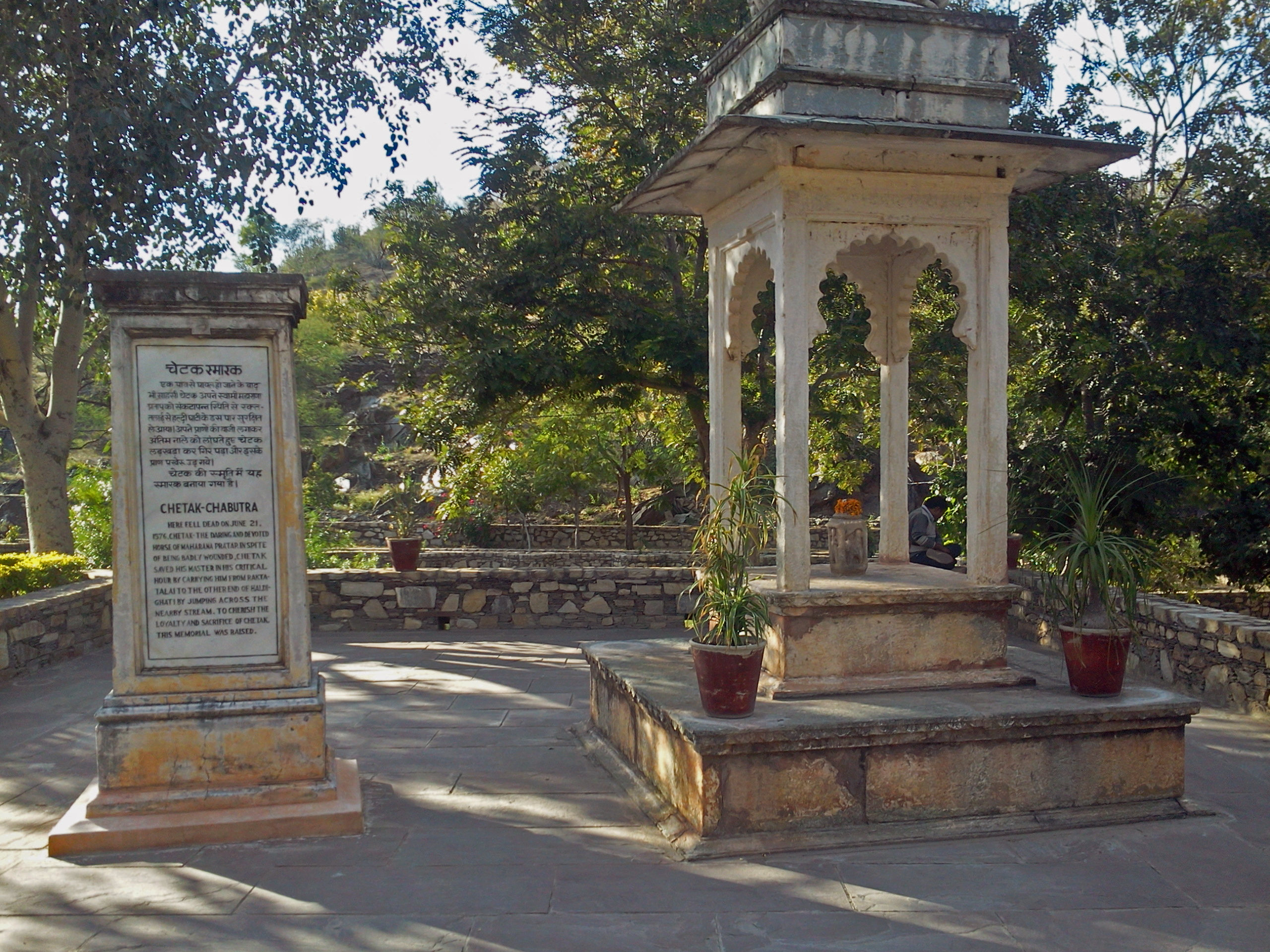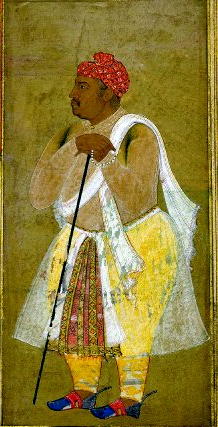|
Ramprasad (elephant)
Ram Prasad (''meaning: Gift from Lord Rama'') was an elephant of Maharana Pratap's army mentioned in the scripts of Al-Qadir Badayuni. Ramprasad was trained in the Kingdom of Mewar and fought the Mughal army in the Battle of Haldighati on 18 June 1576. Life Maharana Pratap had a deep love for his horse Chetak and also for an elephant whose name was Ramprasad. Al-Qadir Badayuni says that when Akbar attacked the Kingdom of Mewar, he wanted two things to be captured: Maharana Pratap and Ram Prasad. He says that Ramprasad was a brave and smart elephant of the Mewar army. He further says that when the Battle of Haldighati started, Ramprasad with his mahout and Chieftain ( Pratap Singh Tanwar) started attacking the Mughal army. Ramprasad is said to have killed 13 elephants of the Mughal army, along with their mahouts. However, Ramprasad's mahout was shot with an arrow by the Mughal forces and downed. After Mansingh received news that one elephant was killing his soldiers rapidl ... [...More Info...] [...Related Items...] OR: [Wikipedia] [Google] [Baidu] |
Maharana Pratap
Pratap Singh I (9 May 1540 – 19 January 1597), popularly known as Maharana Pratap (), was king of the Kingdom of Mewar, in north-western India in the present-day state of Rajasthan, from 1572 until his death in 1597. He is notable for leading the Rajput confederacy, Rajput resistance against the expansionist policy of the Mughal Emperor Akbar including the battle of Haldighati and the battle of Dewair. Early life and accession Maharana Pratap was born to Udai Singh II of Udaipur State, Mewar and Jaiwanta Bai in 1540, the year in which Udai Singh ascended to the throne after defeating Vanvir singh, Vanvir Singh. His younger brothers were Shakti Singh (16th century Indian noble), Shakti Singh, Vikram Singh and Jagmal Singh. Pratap also had two stepsisters: Chand Kanwar and Man Kanwar. His chief consort was Ajabde, Ajabde Bai Punwar of Bijolia. Their eldest son was Amar Singh I. He belonged to the royal family of Mewar. After the death of Udai Singh in 1572, Rani Dheer Bai Bh ... [...More Info...] [...Related Items...] OR: [Wikipedia] [Google] [Baidu] |
ʽAbd Al-Qadir Badayuni
ʽAbd al-Qadir or Abdul Qadir Badayuni (1540–1615) was an Indian writer, historian, and translator. He lived in the Mughal Empire. He translated into Persian the Hindu works, the Ramayana and the Mahabharata ( Razmnama). Life Badayuni was a Rajasthani Shaikhzada and a son of Muluk Shah. He grew up in Basavar, studying in Sambhal and Agra. In 1562, he moved to Badaun, the town after which he was named, before moving to Patiala to enter the service of prince Husayn Khan for the next nine years. His later years of study were led by Muslim mystics. The Mughal emperor, Akbar, appointed him to the religious office in the royal courts in 1574 where he spent much of his career. Major works Badayuni wrote '' Muntakhab-ut-Tawarikh'' (Selection of Chronicles) or ''Tarikh-i-Badayuni'' (Badayuni's History) which was completed in 1595 (1004 AH). This work in three volumes is a general history of the Muslims of India. The first volume contains an account of Babur and Humayun. The second vo ... [...More Info...] [...Related Items...] OR: [Wikipedia] [Google] [Baidu] |
Kingdom Of Mewar
The Kingdom of Mewar was an independent Hindu kingdom that existed in the Rajputana region of the Indian subcontinent and later became a dominant state in medieval India. The kingdom was initially founded and ruled by the Guhila dynasty, followed by it's cadet branch, the Sisodia Dynasty. The earliest kingdom was centered around the south-central part of Rajasthan, state of India. It was bordered by the Aravali Range to the northwest, Ajmer to the north, Gujarat, Vagad and Malwa regions to the south and the Hadoti region to the east. Mewar rose to prominence in the reign of Bappa Rawal (7th century AD) known for his involvement in thwarting Arab incursions in India. Over time, It became vassal to Imperial Pratihara, Paramaras and then to Chahamanas. In the early 10th century, Mewar emerged as an independent state, actively battling neighboring powers and confronting the expansion of Delhi Sultanate until the fall of its capital Chittorgarh in 1303 against the latt ... [...More Info...] [...Related Items...] OR: [Wikipedia] [Google] [Baidu] |
Mughal Empire
The Mughal Empire was an Early modern period, early modern empire in South Asia. At its peak, the empire stretched from the outer fringes of the Indus River Basin in the west, northern Afghanistan in the northwest, and Kashmir in the north, to the highlands of present-day Assam and Bangladesh in the east, and the uplands of the Deccan Plateau in South India.. Quote: "The realm so defined and governed was a vast territory of some , ranging from the frontier with Central Asia in northern Afghanistan to the northern uplands of the Deccan plateau, and from the Indus basin on the west to the Assamese highlands in the east." The Mughal Empire is conventionally said to have been founded in 1526 by Babur, a Tribal chief, chieftain from what is today Uzbekistan, who employed aid from the neighboring Safavid Iran, Safavid and Ottoman Empires Quote: "Babur then adroitly gave the Ottomans his promise not to attack them in return for their military aid, which he received in the form of the ... [...More Info...] [...Related Items...] OR: [Wikipedia] [Google] [Baidu] |
Battle Of Haldighati
The battle of Haldighati was fought on 18 June 1576 between the Mewar forces led by Maharana Pratap, and the Mughal forces led by Man Singh I of Amber. The Mughals emerged victorious after inflicting significant casualties on Mewari forces, though they failed to capture Pratap, who reluctantly retreated persuaded by his fellow commanders. The siege of Chittorgarh in 1568 had led to the loss of the fertile eastern belt of Mewar to the Mughals. However, the rest of the wooded and hilly kingdom was still under the control of the Sisodias. Akbar was intent on securing a stable route to Gujarat through Mewar; when Pratap Singh was crowned king (Rana) in 1572, Akbar sent a number of envoys entreating the Rana to become a vassal like many other Rajput leaders in the region. However, Pratap refused to enter into a treaty, which led to the battle. The site of the battle was a narrow mountain pass at Haldighati near Gogunda in Rajasthan. Sources differ on the strength of the res ... [...More Info...] [...Related Items...] OR: [Wikipedia] [Google] [Baidu] |
Chetak
Chetak or Cetak is the name given in traditional literature to the horse ridden by Maharana Pratap at the Battle of Haldighati, fought on 18 June 1576 at Haldighati, in the Aravalli Mountains of Rajasthan, in western India. The story Historical sources do not name the horse ridden by Maharana Pratap at the Battle of Haldighati on 18 June 1576, nor do they attribute any unusual feat or achievement to it. According to tradition, the horse was called Chetak. Although wounded, Chetak carried Pratap safely away from the battle, but then died of his wounds. The story is recounted in court poems of Mewar from the seventeenth century onwards. The horse is first named Cetak in an eighteenth-century ballad, ''Khummana-Raso''. The story was published in 1829 by Lieutenant-Colonel James Tod, a colonial officer who had been political officer to the Mewari court, in the first volume of his ''Annals and Antiquities of Rajast'han or the Central and Western Rajpoot States of India''. ... [...More Info...] [...Related Items...] OR: [Wikipedia] [Google] [Baidu] |
Akbar
Akbar (Jalal-ud-din Muhammad Akbar, – ), popularly known as Akbar the Great, was the third Mughal emperor, who reigned from 1556 to 1605. Akbar succeeded his father, Humayun, under a regent, Bairam Khan, who helped the young emperor expand and consolidate Mughal domains in the Indian subcontinent. He is generally considered one of the greatest emperors in Indian history and led a successful campaign to unify the various kingdoms of '' Hindūstān'' or India proper. Quote: "Akbar, The greatest Mughal emperor of India." Akbar gradually enlarged the Mughal Empire to include much of the Indian subcontinent through Mughal military, political, cultural, and economic dominance. To unify the vast Mughal state, Akbar established a centralised system of administration and adopted a policy of conciliating conquered rulers through marriage and diplomacy. To preserve peace and order in a religiously and culturally diverse empire, he adopted policies that won him the support of his no ... [...More Info...] [...Related Items...] OR: [Wikipedia] [Google] [Baidu] |
Pratap Singh Tanwar
Pratap Singh Tanwar was a son of Ramshah Tanwar, the Tomara Rajput ruler of Gwalior. He fought in the Battle of Haldighati (1576) along with his father (Ramshah) and brothers: Shalivahan Singh Tomar and Bhavani Singh as allies of Maharana Pratap against the Mughal army of Akbar. His special role in the Battle of Haldighati was that he was controlling Ramprasad, the mighty battle elephant of the Mewar army. See also * Tomaras of Gwalior * Shalivahan Singh Tomar * Battle of Haldighati The battle of Haldighati was fought on 18 June 1576 between the Mewar forces led by Maharana Pratap, and the Mughal forces led by Man Singh I of Amber. The Mughals emerged victorious after inflicting significant casualties on Mewari forces, ... References {{reflist People from Gwalior ... [...More Info...] [...Related Items...] OR: [Wikipedia] [Google] [Baidu] |
Man Singh I
Mirza Raja Man Singh I (21 December 1550 – 6 July 1614) was the 24th Raja, Kachawaha Rajput ruler of the Kingdom of Amber from 1589 to 1614. He also served as the foremost imperial Subahdar of Bihar Subah from 1587 to 1594, then for Bengal Subah for three terms from 1595 to 1606 and the Subahdar of Kabul Subah from 1585 to 1586. He served in the imperial Mughal Army under Emperor Akbar. Man Singh fought sixty-seven important battles in Kabul, Balkh, Bukhara, Bengal and Central and Southern India. He was well versed in the battle tactics of both the Rajputs as well as the Mughals. He is commonly considered to be one of the Navaratnas, or the nine (''nava'') gems (''ratna'') of the royal court of Akbar. Early life of Man Singh I He was the son of Raja Bhagwant Das and his wife Bhagawati of Amer. He was born on Sunday, 21 December 1550. Initially known as ''Kunwar'' (prince), Man Singh received the title of ''Mirza (noble), Mirza'' or ''Raja'' (King) and the rank ''Mansab ... [...More Info...] [...Related Items...] OR: [Wikipedia] [Google] [Baidu] |
Chakravyuha
The Padmavyūha () or Chakravyūha () is a military formation used to surround enemies, depicted in the Hindu epic ''Mahabharata''. It resembles a labyrinth of multiple defensive walls. Background The Padmavyūha is a multi-tiered defensive formation that looks like a blooming lotus ( ) or disc ( ) when viewed from above. The warriors at each interleaving position would be in an increasingly tough position to fight against. The formation was used in the battle of Kurukshetra by Dronacharya, who became commander-in-chief of the Kaurava army after the fall of Bhishma Pitamaha. The various vyūhas (military formations) were studied by the Kauravas and Pandavas alike. Most of them can be beaten using a counter-measure targeted specifically against that formation. In the form of battle described in the ''Mahabharata'', it was important to place powerful fighters in positions where they could inflict maximum damage to the opposing force, or defend their own side. As per this mil ... [...More Info...] [...Related Items...] OR: [Wikipedia] [Google] [Baidu] |



